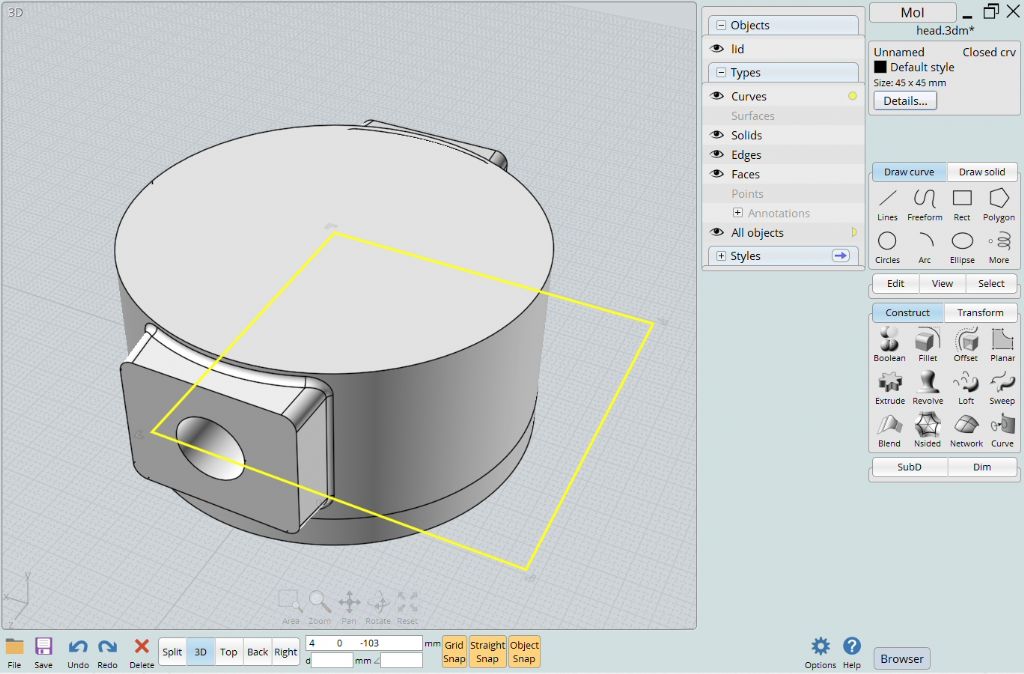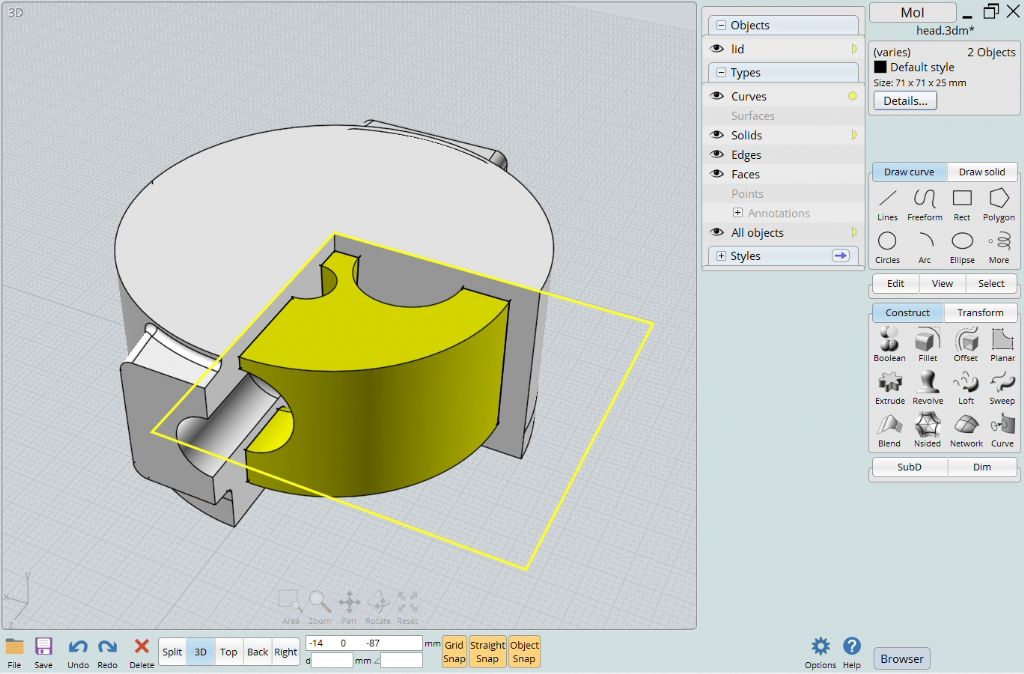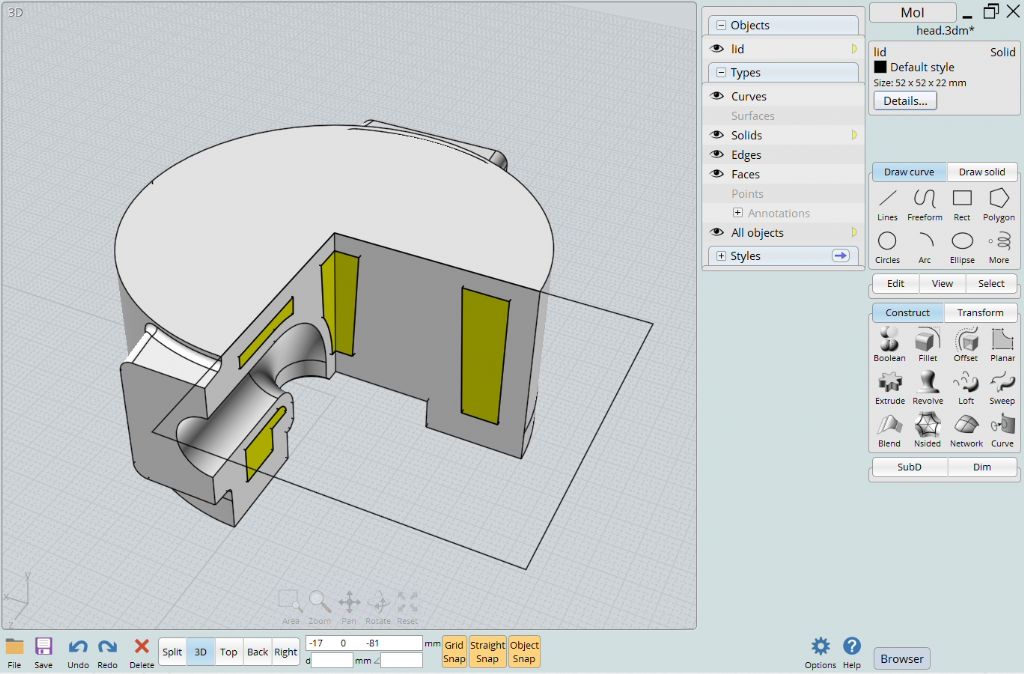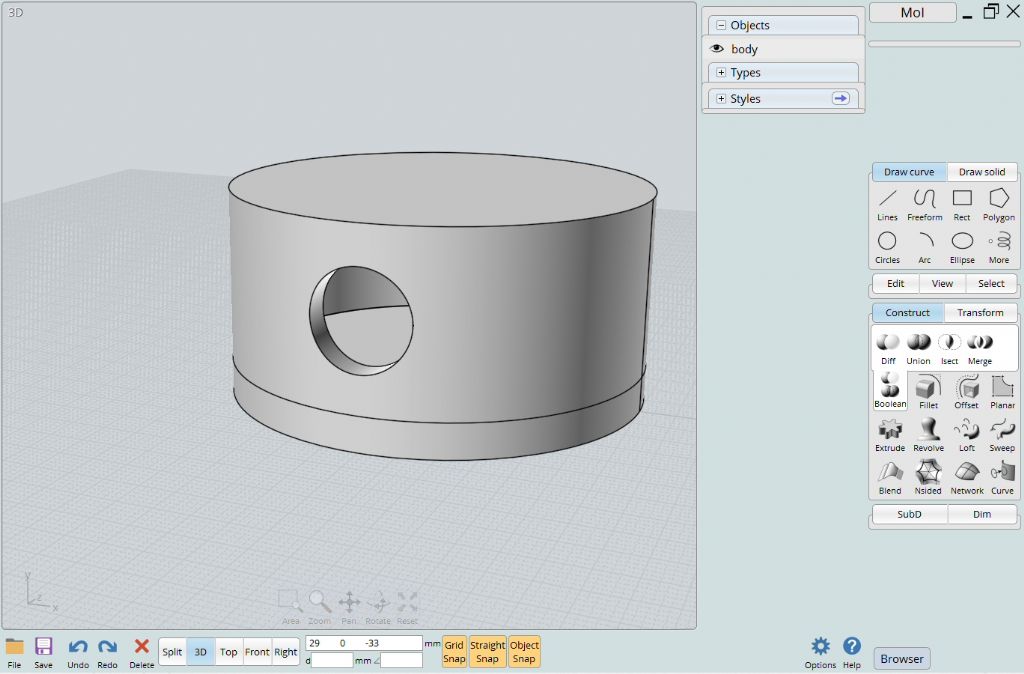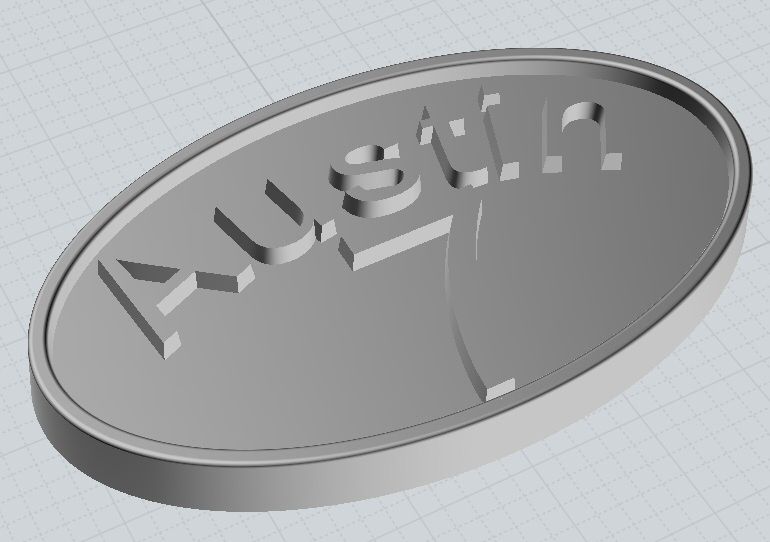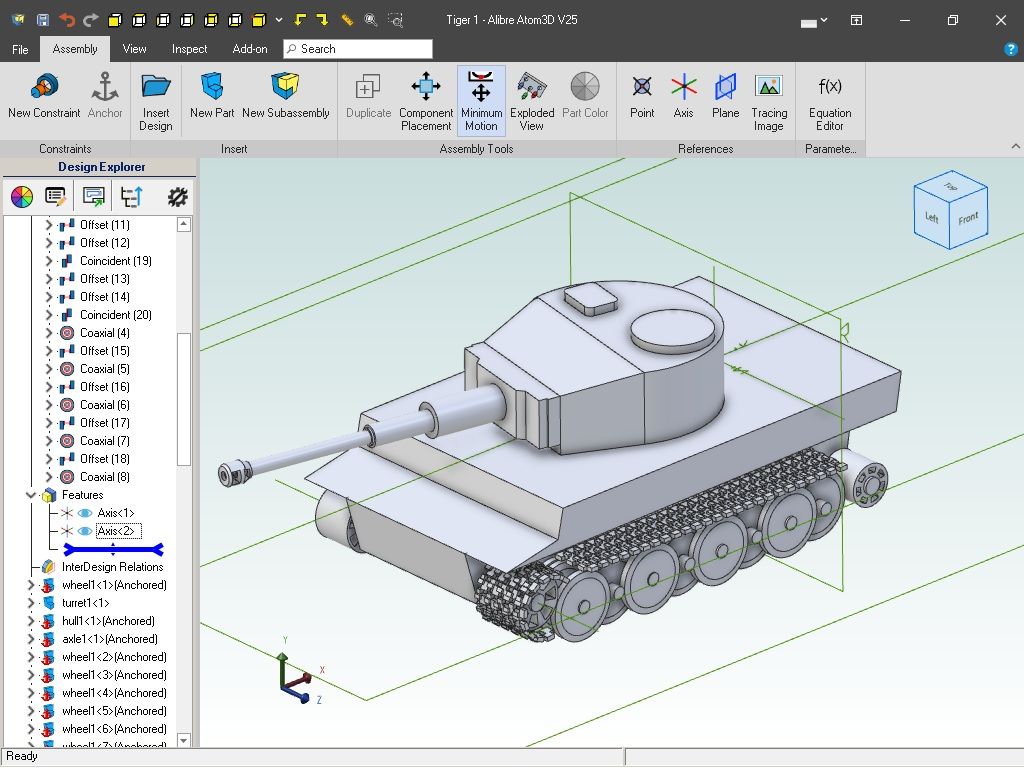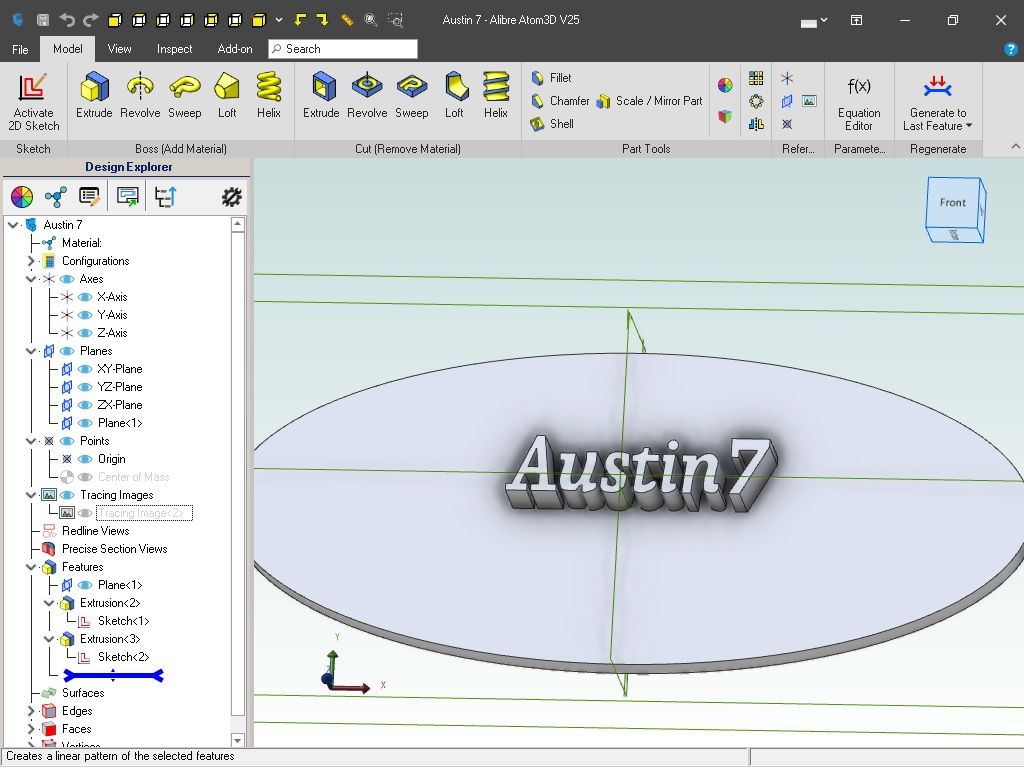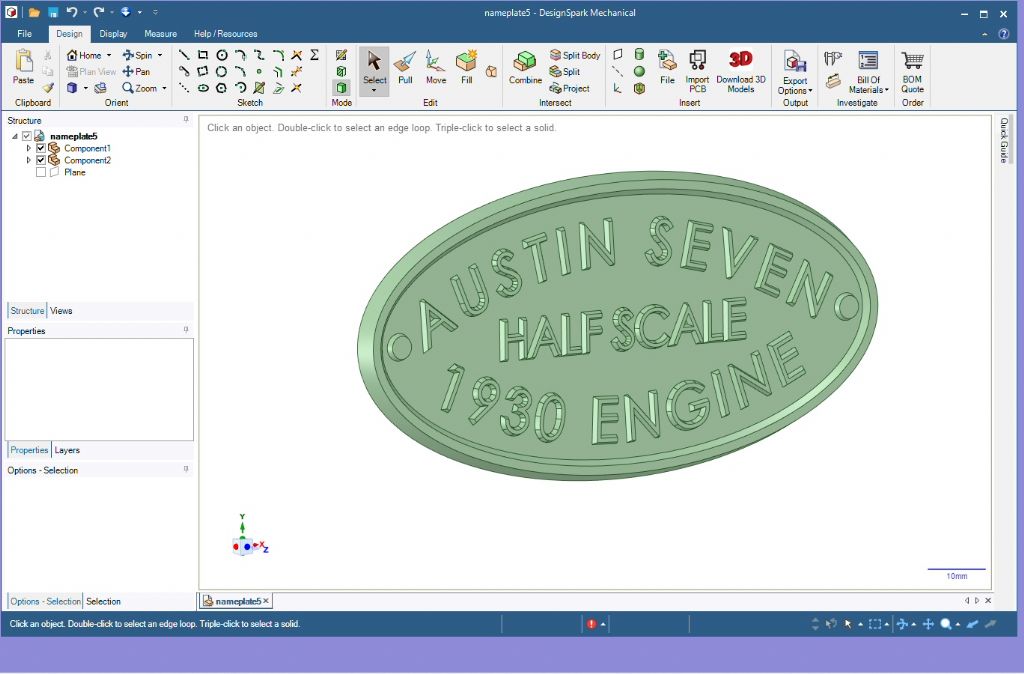I had another go at the head. This pic shows the head ready for capping off. The yellow parts are the tops of the spark plug and valve guides which are 3mm down from the top surface of the head. The head has a water jacket.

This pic is the top filled and and joined to the head with a rectangle ready to boolean cut through the head.

The water jacket has been filled in. I selected it and pressed delete.

This pic shows that the rest of the water jacket is left in place. It too could be deleted to leave the head with a water jacket.
I then tried an experiment to see if it was the boolean cut creating the filled water jacket. I created a head that had no plug or inlet/exhaust tracts, cut a hole in the side, and filled in the top.

It looks as though there is no bottom to the head, there is, it's just the angle. But the point is, it proves that the water jacket isn't filled in by sealing the top. I pressed ctrl z until the hole was gone, filled in the top and cut through.

The water jacket has been filled in again. The water jacket solid could be cut from the head to leave a void. I am not sure if this will cause problems later on, so I will carry on with creating a head and making core moulds and patterns from it.
Should I start a new post? It might not be of interest to many.
lee webster.



